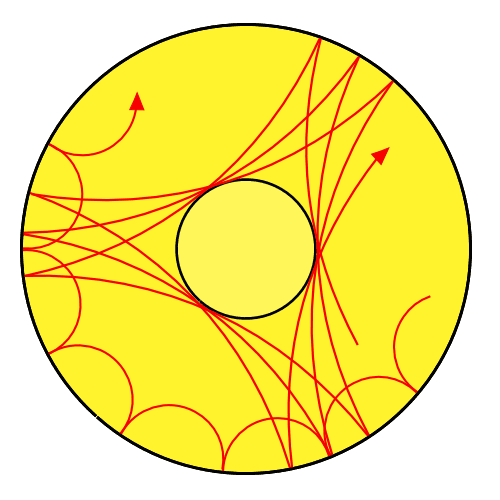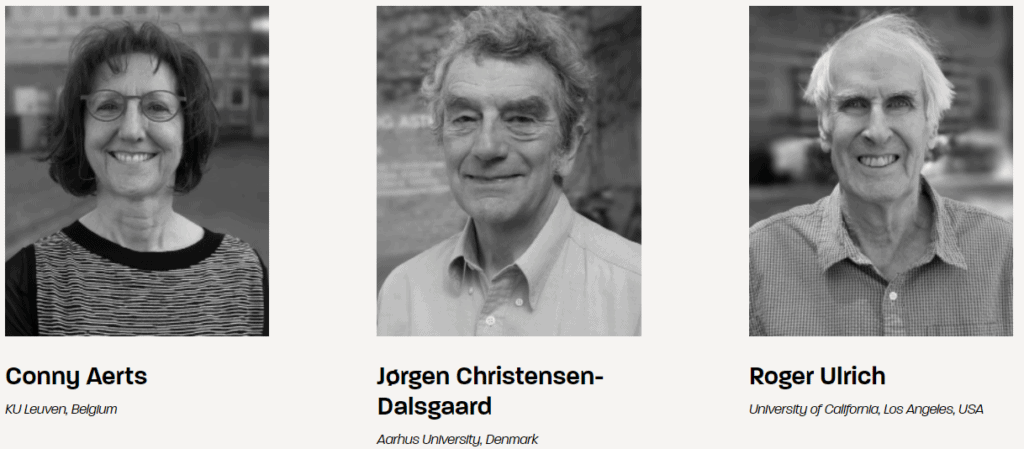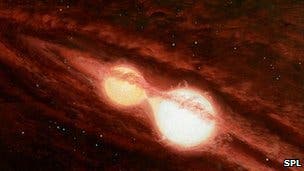Every year since 2005, the Kavli Prize has been awarded to researchers who’ve made outstanding contributions in the fields of astrophysics, nanoscience, and neuroscience. It’s a bit like the Nobel Prize, but instead of focusing on more “classical” fields such as physics or chemistry, the Kavli Prize focuses on these three more novel fields. This year, the prize for astrophysics was awarded to Conny Aerts (Belgium), Jørgen Christensen-Dalsgaard (Denmark), and Roger Ulrich (USA).
The breakthrough work of these researchers laid the foundations of our understanding of the interior of stars and
solar and stellar structure theory and revolutionized our understanding of the interiors of stars.

The sound of stars
Did you ever wonder how we know so much about the interior structure of the Earth when the deepest hole we’ve dug is only a few kilometers deep? From a young age, we’re taught that the Earth features a core, a mantle, and a crust, but it’s not like we can actually go and see them directly; instead, researchers use earthquakes to study.
Earthquakes produce seismic waves that propagate through the Earth’s interior. We can detect these waves (which are essentially acoustic or sound waves) with specialized instruments and measure their speed, wavelength, and other parameters. Based on these measurements, scientists can then make deductions about the interior of the planet — the environment in which these stars propagated.
But what about stars? Stars are gaseous spheres and we can’t exactly go and place scientific instruments to monitor them, but we can still observe them at a distance. In the late 1960s, astronomers noted that every few minutes, the surface of the Sun moves up and down by a few kilometers. Initially, astronomers believed this is restricted to the solar atmosphere, but Roger Ulrich wasn’t convinced.

Ulrich wasn’t satisfied with the information that astronomical observations were providing, so instead, he developed a mathematical model of the sun as a hot ball of gas. It was before the advent of powerful computers, but Ulrich nevertheless managed to show that these oscillations are related to acoustic waves from inside the sun — somewhat similar to the acoustic waves produced by earthquakes.
This laid the mathematical foundation for helioseismology, the study of the structure and dynamics of the Sun through its oscillations.
The waves produced by these oscillations also encode information about different solar regions. A wave’s speed, which depends on the temperature of the Sun, is a key parameter that can be used to infer the density and even the chemical make-up of the Sun.
Ulrich’s work integrated theoretical models and practical observations. In the 1970s and 1980s, Ulrich was a key supporter of the Heliospheric Observatory (SoHO) mission, a mission designed to study the Sun “inside out.”
To the sun and beyond

Another important supporter of SoHO was Jørgen Christensen-Dalsgaard, who figured out that it wasn’t just the sun — other stars were also doing this dance. So in addition to seismology (on Earth), helioseismology (on the Sun), you could also do asteroseismology (on any star). He focused on cooler, lighter stars, either similar to the sun or even smaller (such as dwarfs).
Among many other contributions, Christensen-Dalsgaard played a key role in determining the sun’s helium content and the sound speed profile. He also realized that satellite observers launched with the purpose of discovering planets (for instance, the TESS mission) could also be used for asteroseismology.
Meanwhile, Conny Aerts expanded the scope of asteroseismology to larger and hotter stars. Where Christensen-Dalsgaard focused on stars that were sun-sized or smaller, Aerts was keen on larger objects. She also used data from both helioseismology missions and planet-finding missions.
Aerts pioneered a new rigorous mathematical methodology used to detect and identify stellar oscillations and more recently, has also worked on designing and applying statistical classification methods in a machine-learning context. Armed with these methods, she has made a number of important discoveries regarding stellar evolution. Her Ph.D. students and colleagues are now working to expand these methods even further.
It’s remarkable that we’ve learned so much about the inside of the Earth — but understanding the structure and behavior of the Sun and other stars that lie light years away is a much greater challenge and required a careful integration of both observational data and mathematical models. Conny Aerts, Jørgen Christensen-Dalsgaard, and Roger Ulrich have made valuable contributions to our understanding of stars. In addition to the glory, they will also share a prize of $1 million USD.



